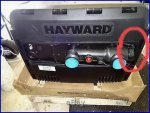Here’s the story.
Brand new pool, heater and all components. Hayward 150,000btu heater is causing me grief since the venting was installed. I hired a gas fitter to install the gas system middle of the summer last year. He hooked up the gas, but couldn’t install the venting (it’s located inside a pool house) as he had to order the stainless duct. (backordered). So for a week or two I ran the heater without the venting (with doors to pool house open) and it ran flawlessly. Then the gas fitter came back and installed the Hayward brand heat shield thingy that mounts to the top of the heater and the duct work. He has the duct work going straight up for 4’ and then a curved piece runs it out the back of the pool house. From the moment he installed the venting it now shakes and rumbles like a motorcycle. Not all the time, but for about 60% of the time. It’s so violent sometimes I turn it off in fear of causing damage.
I spoke to Hayward today (they have the best customer service period) and after sending them photos of the install and my story they feel that it’s not the install, but rather the heat exchanger. They feel there is likely a calcium build up that needs to be cleaned. I’m not so sure? That quickly? It’s less than a year old. It started acting up after about a month of use.
I am having a hard time with the fact that it’s almost brand new. It ran perfectly and that it only started to act up after the venting was installed. It can’t be a coincidence?
Here are some photos of my setup. Any insight or suggestions are appreciated.
Brand new pool, heater and all components. Hayward 150,000btu heater is causing me grief since the venting was installed. I hired a gas fitter to install the gas system middle of the summer last year. He hooked up the gas, but couldn’t install the venting (it’s located inside a pool house) as he had to order the stainless duct. (backordered). So for a week or two I ran the heater without the venting (with doors to pool house open) and it ran flawlessly. Then the gas fitter came back and installed the Hayward brand heat shield thingy that mounts to the top of the heater and the duct work. He has the duct work going straight up for 4’ and then a curved piece runs it out the back of the pool house. From the moment he installed the venting it now shakes and rumbles like a motorcycle. Not all the time, but for about 60% of the time. It’s so violent sometimes I turn it off in fear of causing damage.
I spoke to Hayward today (they have the best customer service period) and after sending them photos of the install and my story they feel that it’s not the install, but rather the heat exchanger. They feel there is likely a calcium build up that needs to be cleaned. I’m not so sure? That quickly? It’s less than a year old. It started acting up after about a month of use.
I am having a hard time with the fact that it’s almost brand new. It ran perfectly and that it only started to act up after the venting was installed. It can’t be a coincidence?
Here are some photos of my setup. Any insight or suggestions are appreciated.
Attachments
-
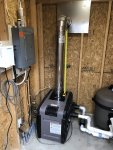 17513799-7613-40CA-AFC5-604C7D74A3F5.jpeg571 KB · Views: 30
17513799-7613-40CA-AFC5-604C7D74A3F5.jpeg571 KB · Views: 30 -
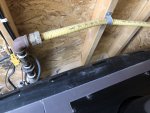 39FC2A88-DBA8-42C0-BFEA-BBC6732AC89D.jpeg458.6 KB · Views: 27
39FC2A88-DBA8-42C0-BFEA-BBC6732AC89D.jpeg458.6 KB · Views: 27 -
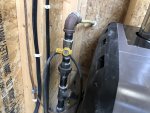 D551FDF5-C57A-4D87-B43E-B47713872AA3.jpeg450.9 KB · Views: 23
D551FDF5-C57A-4D87-B43E-B47713872AA3.jpeg450.9 KB · Views: 23 -
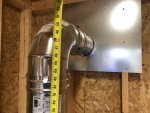 77FBF9D5-620D-4B9F-AC90-691EDA7586A4.jpeg453.1 KB · Views: 23
77FBF9D5-620D-4B9F-AC90-691EDA7586A4.jpeg453.1 KB · Views: 23 -
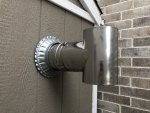 5F4F16A6-A5D3-4751-A2CD-DF8F8780778E.jpeg565 KB · Views: 26
5F4F16A6-A5D3-4751-A2CD-DF8F8780778E.jpeg565 KB · Views: 26 -
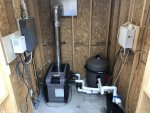 4967304B-E81F-4196-A265-9AECD14F2B20.jpeg495.4 KB · Views: 28
4967304B-E81F-4196-A265-9AECD14F2B20.jpeg495.4 KB · Views: 28



